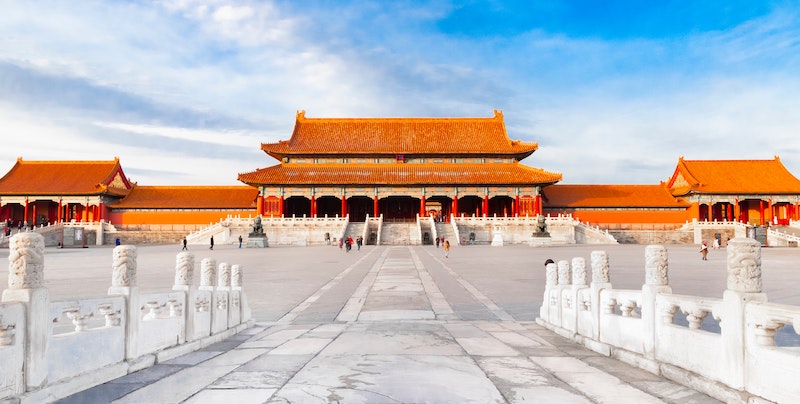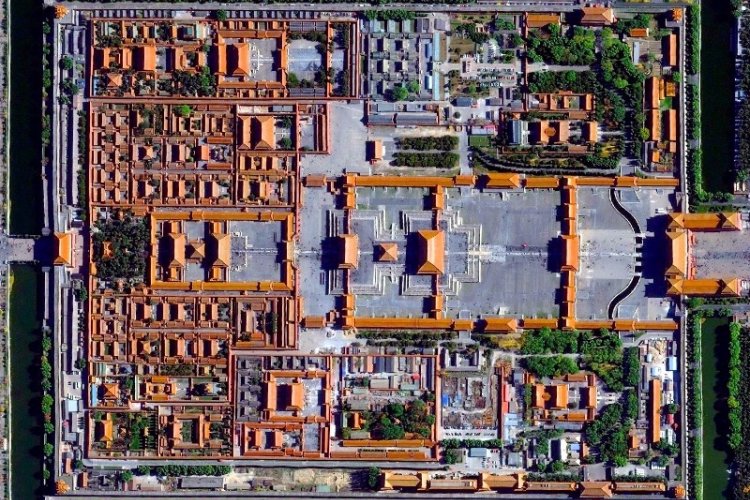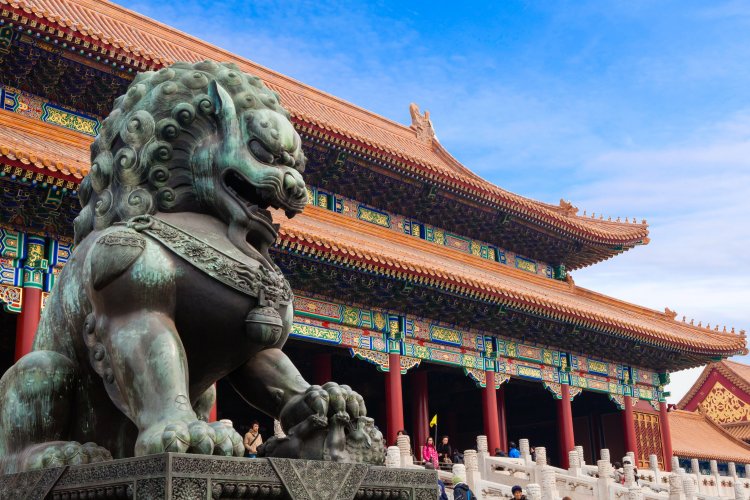600 Years and 24 Emperors Later, Forbidden City Celebrates a Milestone
The Forbidden City turns 600 this year. Over one million laborers toiled 14 years to build the palace for the Yongle Emperor [r. 1402-1424] of the Ming Dynasty, completing construction in December 1420.
On Feb 2, 1421, the throne room at the Forbidden City opened for business – only to burn down three months later. This was not, as they used to say around the eunuch break room, a particularly auspicious omen, and the Yongle Emperor had reason to worry about signs of Heavenly displeasure.

The Yongle Emperor was born Zhu Di in 1360, eight years before his father Zhu Yuanzhang would establish the Ming Dynasty. The Ming founder built his capital at Nanjing but dispatched his son Zhu Di to the north to keep an eye on the pesky Mongolians and guard the northern frontier. Zhu Di made the site of present-day Beijing his base of operations.
The prince did a pretty decent job keeping the Mongolians out of his father’s empire and when Zhu Yuanzhang died in 1398, Zhu Di kind of assumed he would be next in line for the throne. He guessed wrong. His father instead passed the throne to one of the grandkids, Zhu Di’s nephew, Zhu Yunwen (1377-1402). Zhu Di did not hide his disappointment and started a war against his nephew that culminated in the sacking of Nanjing in 1402. The nephew’s body was never found, but most historians believe he died when his palace burned down around him.
Zhu Di now possessed the throne, ruling as the Yongle Emperor, but he had some housekeeping to do. After wrecking the dynastic capital at Nanjing, the new emperor needed a place to live. He then made the fateful decision to build a capital in his northern power base, now known as Beijing: The Northern Capital.
After 14 years of palace and wall building, smiting rivals, and occasionally beheading annoying bureaucrats when they casually threw around phrases like “Father’s wishes,” “usurpation,” and “Mandate of Heaven,” the Yongle Emperor made ready to move into his new digs in 1421, only to have the main ceremonial hall and its two flanking palaces burn down in a lightning strike. The halls wouldn’t be rebuilt for another two decades.
After the Yongle Emperor died in 1424, 23 emperors from two dynasties lived and worked at the palace. The last emperor, Puyi [r. 1908-1912], was given his eviction notice by the warlord Feng Yuxiang in 1924. The year after, two rival museum collections at the Forbidden City merged to create the Palace Museum. In addition to celebrating 600 years of the Forbidden City, the Palace Museum is also honoring the 95th anniversary of the museum's founding while preparing for its centennial celebration in 2025.
Extensive plans for celebrating the 600th anniversary were put on hold in January due to the coronavirus pandemic. With the gradual resumption of normal operations, the Palace Museum is restarting its sexacentennial celebration.
On Sep 1, the Palace Museum announced a special exhibition celebrating the life and works of Su Shi (1037-1101), one of China’s most famous scholars, poets, and officials. The collection features 78 works, including paintings, calligraphy, and writings of Su Shi and other notable figures of the Northern Song era.

Su Shi, also known as Su Dongpo — you may have enjoyed the fatty pork dish which bears that name — was born in Sichuan Province. He passed the highest level of the imperial exams at just 19 years old, attracting the attention of the imperial court and prominent political figures like Ouyang Xiu (1007-1072). Su held several important posts although he was frequently embroiled in political disputes and was eventually exiled to Hainan Island, which in the 12th century was less a place for cookie-cutter pool villas and beachfront seafood restaurants and more a place to send your political enemies when you wanted them to die of malaria.
Su Shi is best known today as a scholar, painter, and philosopher. He was a significant figure in the Confucian revival of the Song era (960-1279), and his poetry and calligraphy are admired by both connoisseurs and commoners to this day.
The exhibition is one of the centerpieces of the Palace Museum’s 600th-anniversary exhibition and is scheduled to run through Oct 30 at the Hall of Literary Brilliance located in the southeastern section of the Forbidden City.
Tickets for the Palace Museum are available online, and with ticket sales limited to 15,000 per day rather than the usual 80,000, now is an excellent time to see the Forbidden City.
READ: A Guide to Exploring Beijing by Foot
Images: _drz_ (via Unsplash), Global Times, Wikicommons




![[NR] Forbidden City Book Photo by Haiwei Hu/Getty Images. All Rights Reserved.](https://www.thebeijinger.com/sites/default/files/styles/blog_list_image/public/thebeijinger/blog-images/265699/5_c_haiwei_hu_getty.jpg)


